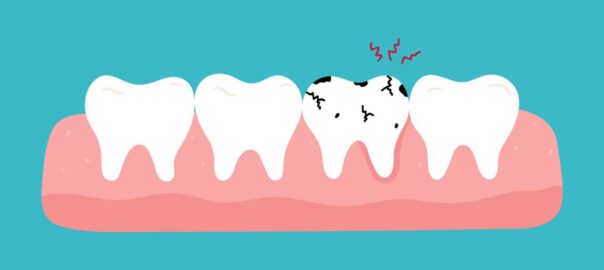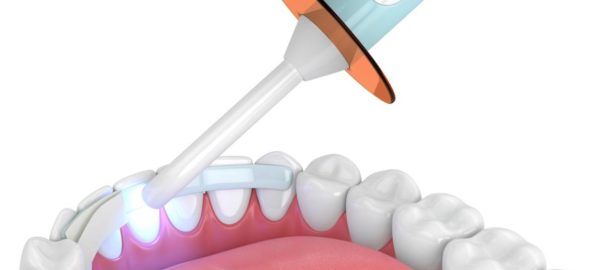Cavities, otherwise known as dental caries, are one of the most common dental problems around the world and one of the most common reasons people visit a dentist. Cavities develop when the acids produced by bacteria in plaque erode the enamel of your teeth. People usually associate cavities with tooth sensitivity and tooth pain. But can a cavity cause jaw pain as well? Continue reading to learn about the intricate connection between cavities and jaw pain.
Can a Cavity Cause Jaw Pain?
A cavity is a damaged area in the hard surface of your teeth. These areas become tiny holes that can cause extreme pain, infection, and tooth loss. Cavities start as small areas of enamel demineralization. If not addressed in a timely manner, the cavity progresses to the dentin and the pulp. When the cavity reaches the pulp, it can cause significant pain and discomfort because the pulp contains nerves and blood vessels.
So the question is, will this pain travel to the jaw? To answer this, one must understand the anatomy of the teeth and their relationship with the jaw.
The Link Between Cavities and Jaw Pain
Nerve Irritation
Each one of your teeth is connected to the jawbone by the nerves that run through the roots of your tooth and into the jaw. When a cavity reaches the pulp, the nerves of the tooth will become irritated and inflamed. This pain can then radiate to the jaw and its surrounding areas.
Infection and Abscesses
Without treatment, bacteria in the cavity can infiltrate the pulp and cause an infection. This infection can spread to the surrounding tissues, including the jawbone, and create a dental abscess, a pocket of pus that forms as a result of bacterial infection. Abscesses cause intense throbbing pain in the affected tooth, gums, and jaw.
Referred Pain
Because the nerves in your mouth are interconnected, inflammation in one area can send pain signals in another. This is why pain from a cavity may not be localized to that tooth but is “referred” to other areas of the face or jaw.
Bruxism or Teeth Grinding
Cavities can cause a misaligned or uneven bite, which can lead to unknowingly and unintentionally grinding teeth. This grinding is known as bruxism. It can occur while one is awake or asleep and stresses the jaw muscles and joints, eventually leading to pain and discomfort.
Temporomandibular Joint Involvement
The temporomandibular joint connects the jawbone to the skull. You have two temporomandibular joints, one on each side of the jaw. Severe tooth pain or infection can affect your jaw movement. In turn, this restricted movement may strain the temporomandibular joint and cause jaw pain, stiffness, and even headaches.
Symptoms to Watch For
You may notice some of the following symptoms when you have a cavity and are experiencing jaw pain.
- Persistent, dull, or sharp toothache
- Painful biting or chewing
- Swelling in the jaw or gums
- Tooth sensitivity to hot, cold, or sweet foods and drinks
- An unpleasant taste in the mouth (a sign of an abscess)
- Difficulty opening and closing your mouth
If these symptoms persist or worsen, or if jaw pain is accompanied by swelling or fever, immediately visit your dentist for proper treatment.
How to Prevent Jaw Pain from Cavities
The best way to avoid cavity-related jaw pain is to practice good dental hygiene and visit your dentist regularly. Follow the tips below to protect yourself from cavities and ensure your oral health.
Brush and Floss Regularly: If you cannot brush after every meal, at least brush twice daily with fluoride toothpaste. Do not go to sleep without having brushed your teeth. Floss once or twice daily to prevent plaque buildup, tooth decay, and cavities.
Use Mouthwash: A good antibacterial mouthwash can help reduce plaque and kill harmful bacteria.
Maintain a Healthy Diet: Avoid sugary and acidic foods. Eat foods rich in calcium and vitamins to strengthen your teeth.
Visit Your Dentist Regularly: Regular dental checkups and cleanings can ensure your teeth are healthy and free from plaque buildup. Your dentist can also catch dental issues early on and address them before they become full-blown problems.
Consult a Dentist in Los Angeles
Cavities can cause jaw pain, especially if the decay has reached the deeper layers of the tooth or if an infection is present. By practicing good oral hygiene, regularly visiting your dentist, and promptly addressing tooth pain, you can protect your teeth and prevent cavity-related jaw pain from disrupting your daily life.
Whether your tooth pain is accompanied by jaw pain or not, a reputable dentist can help you manage your pain and address the problem. Schedule a consultation with Samaritan Dental today to relieve your dental pain.

















 Yelp
Yelp I have never had a better dental experience prior to my visit with Dr. Zabolian. It was pain free for the first time ever, the staff was friendly, accommodating to my schedule, there were no problems with my insurance claims... I am so happy I have found a dentist (after all these years) I feel so comfortable going to and also taking my family.
I have never had a better dental experience prior to my visit with Dr. Zabolian. It was pain free for the first time ever, the staff was friendly, accommodating to my schedule, there were no problems with my insurance claims... I am so happy I have found a dentist (after all these years) I feel so comfortable going to and also taking my family. 






